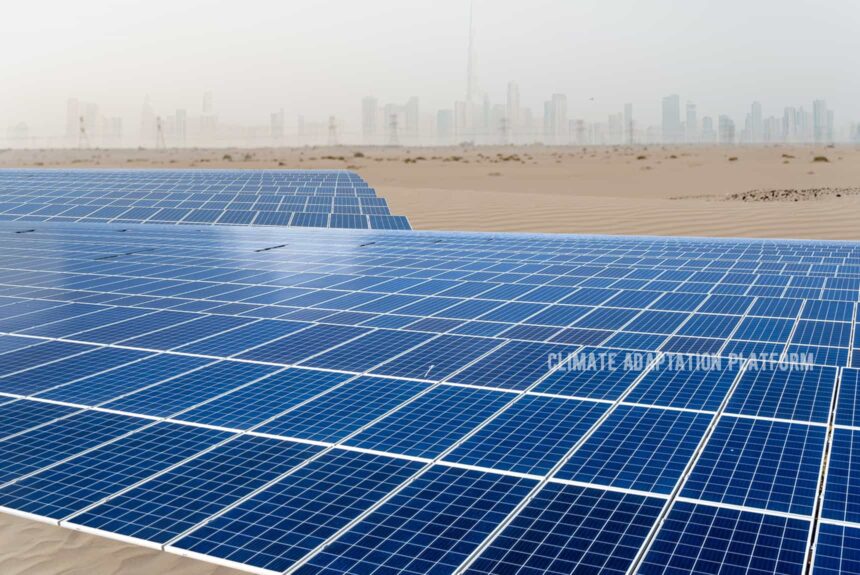The United Arab Emirates is one of the top ten producers of oil. It has a proven oil reserve of 100 billion barrels, of which 96% are in its capital city, Abu Dhabi.
The country produces an average of 32 million barrels of petroleum and liquids daily. While the country sits on a bountiful fossil deposit, it has noble aims to invest in clean technologies and to green its energy industry.
“ADNOC is making today’s energy cleaner while investing in the clean energies of tomorrow,” an announcement made by Sultan Al Jaber, the UAE’s minister of industry, during the Abu Dhabi International Petroleum Exhibition and Conference (Adipec) on October 31 to November 3, 2022.
The gathering was attended by prominent global oil executives and chiefs of national oil companies to discuss their response to the energy crises and clean energy transition plans, among other topics.
In the past, big oil companies in the Gulf’s energy industries have defended fossil fuels. The announcement that the state-owned company is taking steps towards decarbonisation is remarkable.
The Economist reports that neighbouring countries like Saudi Arabia and Kuwait have also announced net-zero emissions targets by 2060, and the UAE and Oman plan to achieve net zero by 2050.
In addition to announcing a commitment to green its fossil fuel economy, the UAE will also host the annual UN Climate Summit, COP28, this year, and Sultan al-Jaber was appointed to lead the climate talks.
McGrath (2023) says:
The announcement sparked concerns among green activities, for how can someone so immersed in the oil industry push countries to reduce their fossil fuel production and consumption? But other diplomatic experts see this as a positive move.
The UAE’s plans to invest in clean energy and technologies are a win for the climate and serve as a model for other oil industries worldwide to follow.
And whichever direction the major oil companies like ADNOC and Saudi Aramco go in terms of technology and strategy, the rest of the global energy firms usually follow.
The Gulf’s oil powers’ clean energy and technology investment plan consists of a two-pronged approach – first, it includes additional capital investment to increase oil and gas production, and the second one involves a significant commitment to green technologies (Why the Gulf’s, 2022).
Why the Gulf’s (2022) explains:
- The first pillar, which includes increased investments in fossil fuel amid the global pressures to slash emissions and push decarbonisation, seems foolish, but this is not surprising for countries whose government budgets are reliant on the revenues from their major oil firms.
- However, scrutinising the clean technology investment plan reveals a real bet on green technologies and decarbonisation. This a wise move coming from the awareness that their best customers, especially from developed countries, are cracking down on emissions and passing carbon border tax.
- The Gulf’s intention to become the cleanest fossil fuel producer is not farfetched because the region’s hydrocarbon reserves are among the least carbon-intensive to extract where oil is found and produced. The area also has additional plans to reduce its carbon intensity further through high operational efficiency and low gas flaring, the article says.
- According to the article, the second pillar of the Gulf’s strategy is more intriguing and involves investing part of today’s fossil windfall in the clean-energy technologies of tomorrow. These clean technology investments include carbon capture and storage, renewables, and hydrogen.
Aramco plans to develop the capacity to capture, store and utilise 11m tonnes of carbon dioxide a year and to install 12 gigawatts of wind and solar power by 2035 (Why the Gulf, 2022).
Saudi Arabia also plans to build 54 GW of renewable capacity by 2032. UAE aims to generate 100GW of renewable energy by 2030 at home and abroad.
In 2021, the UAE launched its first’s “green hydrogen” plant. Saudi’s ACWA Power has almost finished financing its $5 billion green-hydrogen projects, while Oman plans to invest $30 billion in perhaps the world’s largest hydrogen plant (Why the Gulf, 2022).
Then there are investments abroad by Saudi Arabia and UAE. UAE’s Masdar is investing in a $10 billion hydrogen project in Egypt, developing green hydrogen and renewables in Azerbaijan, and green hydrogen in northern England (Why the Gulf, 2022).
UAE’s Net Zero Plan
The Emirates embarks on a ground-breaking renewable and energy efficiency program. The UAE’s Net Zero by 2050 Strategic Initiative, the first in the Middle East’s countries, is aligned with the Paris Agreement goals.
The UAE Energy Strategy 2050 targets an energy mix combining renewable, nuclear, and clean energy sources to meet the country’s economic requirements: 44% clean energy, 38% gas, 12% clean coal, and 6% nuclear.
Click the link to learn more about UAE Energy Diversification.
Sources:
Why the Gulf’s oil powers are betting on clean energy. (2022, December 19). The Economist. Retrieved from https://www.economist.com/business/2022/12/19/why-the-gulfs-oil-powers-are-betting-on-clean-energy
McGrath, M. (2023, January 13). Climate change: UAE names oil chief to lead COP28 talks. BBC. Retrieved from https://www.bbc.com/news/science-environment-64240206
UAE Net Zero 2050. Retrieved from https://u.ae/en/information-and-services/environment-and-energy/climate-change/theuaesresponsetoclimatechange/uae-net-zero-2050



Leave a Reply